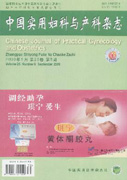|
Clinical value of sacrocolpopexy.
WANG Xiao-juan,HUA Ke-qin
2020, 36(10):
942-945.
DOI: 10.19538/j.fk2020100109
Sacrocolpopexy is the suspension of the vaginal vault or uterus on to the anterior longitudinal ligament at the level of the sacrum,using a prosthetic material or other grafts.Sacrocolpopexy is a classic surgical procedure for pelvic organ prolapse,being developed from abdominal sacrocolpopexy,to laparoscopic sacrocolpopexy,and to transvaginal single port laparoscopic sacrocolpopexy(VLSC).The VLSC,as a newly-emerged minimally invasive surgical technique,combines the advantage of the vaginal surgery and laparoscopic surgery.This minimally invasive surgery has the following advantages,such as better cosmetic outcomes,less postoperative pain,faster recovery,higher subjective and objective cure rate,and less complications associated with mesh,which is expected to become a common surgery for POP in the near future.
|

